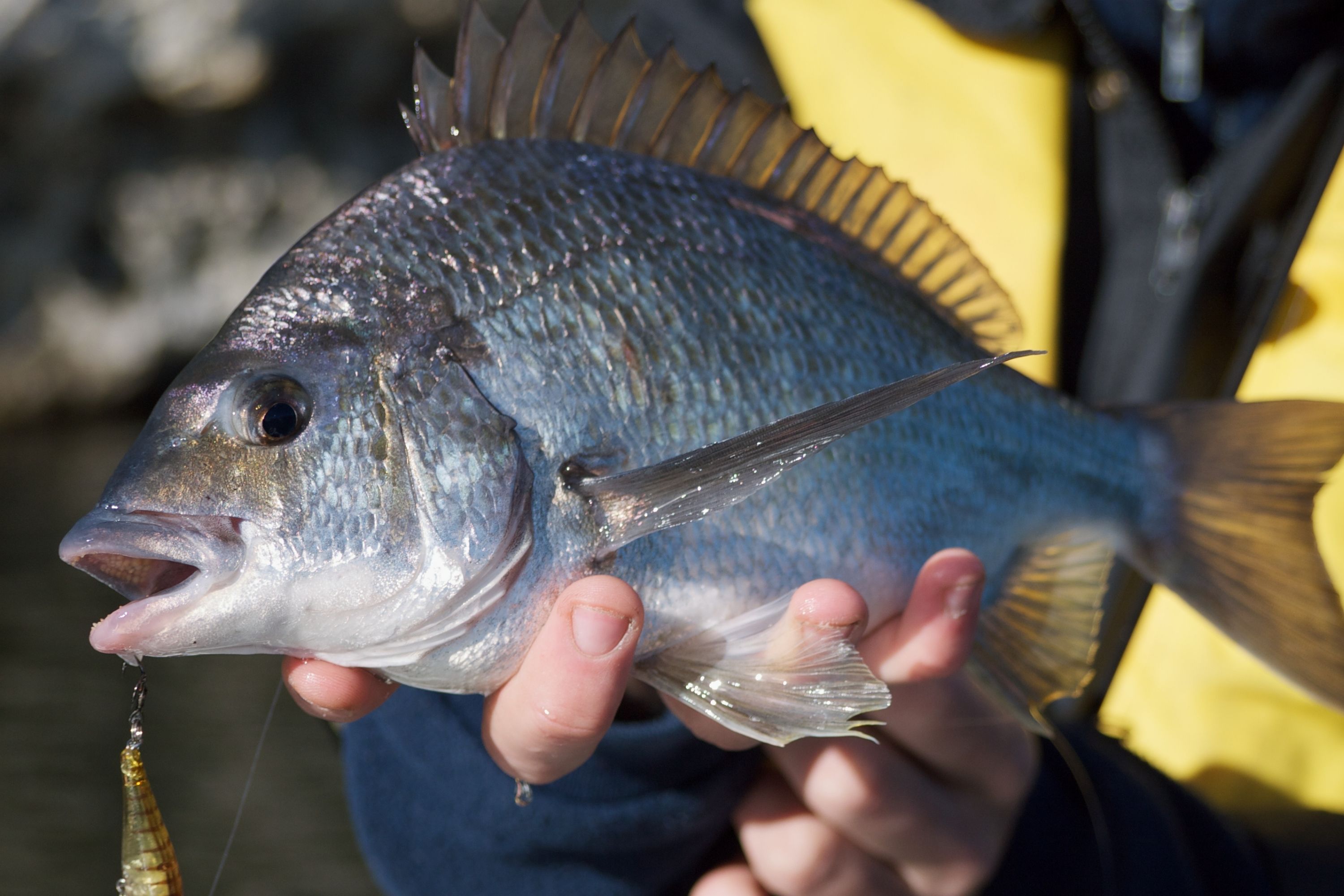Black bream
(Acanthopagrus butcheri)

Description
Acanthopagrus butcheri, the black bream but also commonly known as the southern black bream, southern bream and blue-nosed bream, is a species of marine and freshwater fish of the porgy family, Sparidae. It is a deep-bodied fish, occasionally confused with other similar species that occur within its range, but is generally distinguished from these species by a lack of yellow ventral and anal fins. Southern black bream are endemic to Australia, inhabiting the southern coast from Shark Bay in Western Australia to Ulladulla, New South Wales, as well as Tasmania. The species is primarily an inhabitant of estuaries and coastal lakes, rarely entering the ocean, as it cannot complete its life cycle in a fully marine environment. During the breeding season, the species is known to penetrate into the upper reaches of rivers to spawn, causing an influx of juveniles in the estuaries a few months later. Black bream are opportunistic predators, consuming a wide range of crustaceans, molluscs, polychaetes and fish. The southern black bream is a major target for both commercial and amateur fishermen due to its high quality flesh, with over 300 tonnes of fish taken each year by commercial fisheries. Anglers also seek out the fish for its sporting qualities, with the development of lure fishing for bream adding to this attraction. Aquaculture techniques for the species are being developed, with a slow growth rate the major hurdle to large scale food production. The southern black bream has a deep, moderately compressed body, with both the dorsal and ventral profiles equally curved. The mouth is of moderate size in comparison with the body, and contains six curved, peg like incisors in the front of both upper and lower jaws. The molars are set in series of four or five on each side of the upper jaw, and in series of three or four on the sides of the lower jaw, becoming smaller in size anteriorly. The body is covered with large scales, which may be cycloid or weakly ctenoid in shape. The head is mostly scale-free, with the exception of parts of the operculum. A low, scaly sheath covers the bases of the soft dorsal, anal and caudal fins. The lateral line scale count is 52–58. There is a single dorsal fin originating a little behind the posterior edge of the operculum, consisting of 10 to 13 spines set in front of 10 to 13 soft rays.
Taxonomic tree:







